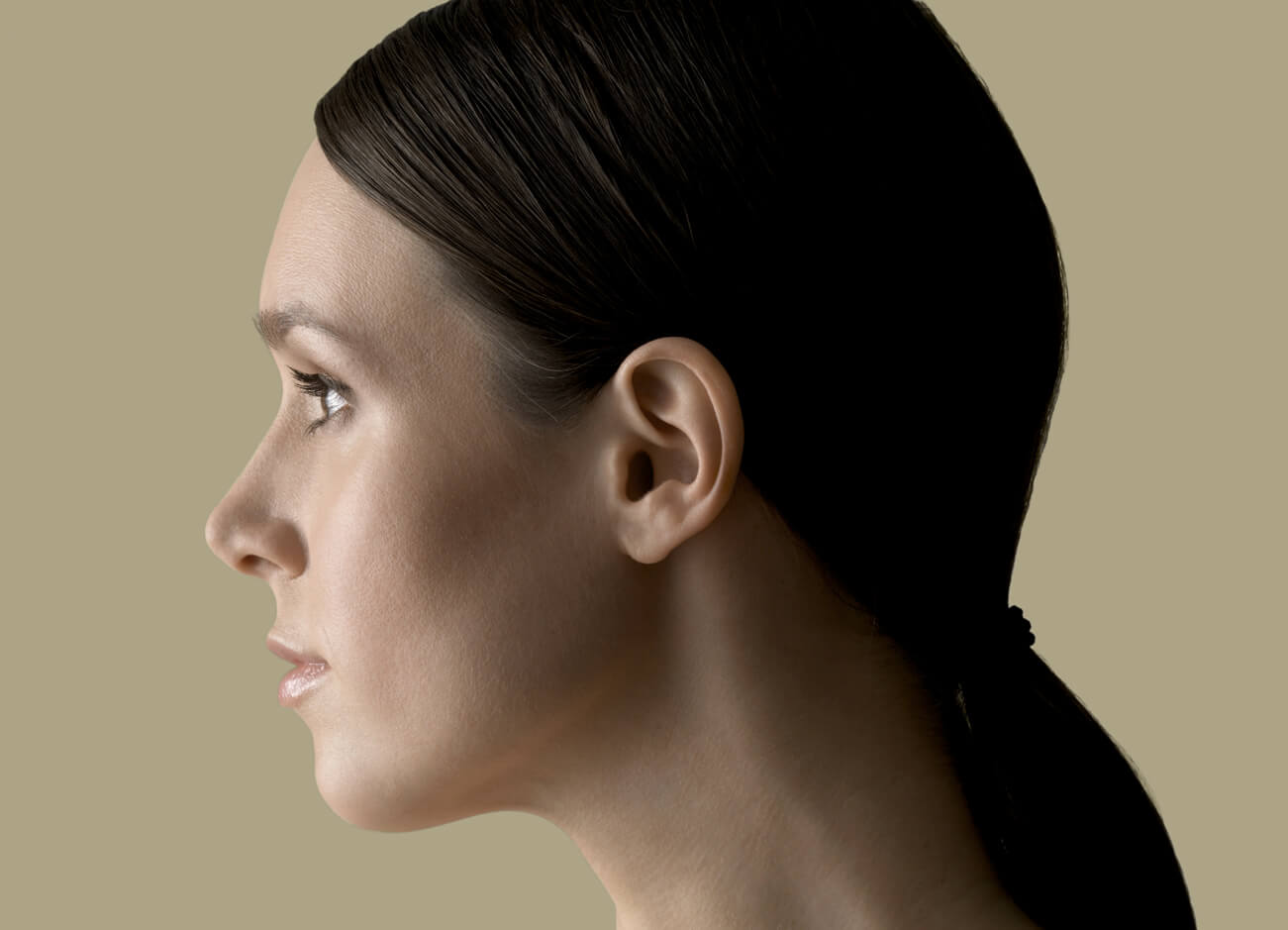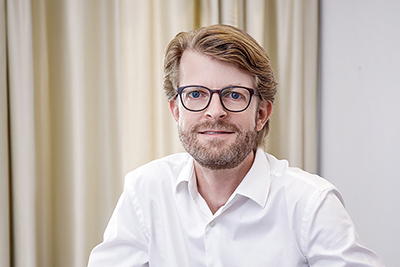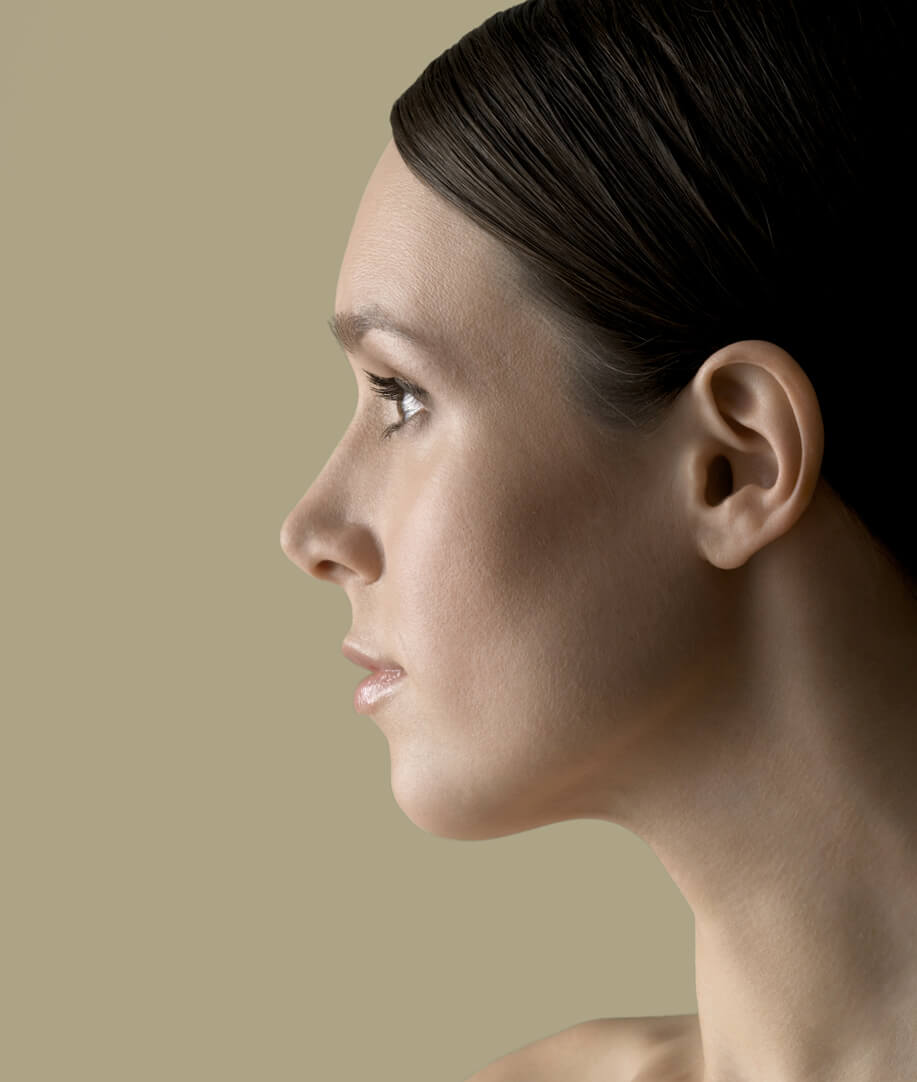
Generally speaking nose surgery (rhinoplasty) refers to the correction of the shape of the nose, (i.e. the nasal tip or the nose bridge). To have a straight nose one has to have straight nasal bones and cartilages, thus to straighten the nose one has to restructure the bone and cartilage. The form and function of the nose are interdependent. The correction of the shape of the nose often consists of reducing the size of the nose, the removal of a nasal bump, and/or the reshaping of the nasal tip to achieve a harmonious profile.
Generally nose surgery is undertaken the earliest at the age of 16 years in girls and 17 years in boys. The reason for this is that the nose has not yet finished growing at an earlier age and an operation would affect this growth; the result of an operation would also be influenced by further nasal growth in an unpredictable way. The motivation to change the nose has to be carefully assessed and has to be long-lasting. The desire to perform the operation has to be self-motivated and not influenced by anyone else.

Considerations
When to consider nose surgery:
- The nose is out of proportion (too large, too small, too long or too short) in relation to the face
- The nose is deviated
- The nasal profile is hooked
- The nasal bridge is sunken in profile
- The nose is too wide
- The tip of the nose hangs down or looks boxy
- The nose is asymmetrical
- Nasal breathing is impaired
It is important to have a good idea of what you would like your nose to look like and to realise that this idea can often only approximately be achieved. The surgeon needs to understand your expectations and to ascertain whether they are realistically attainable. Once fully grown, nose surgery can be undertaken at any age. The fact that the nose changes continuously with age is also taken into account when planning nose surgery.
Consultation
A prerequisite to a successful operation is careful planning. This starts with a personal consultation.
- Communication of wishes and expectations to ascertain what you would like to improve
- Explanation of the possibilities and scope of the operation
Examination:
- Medical history is taken
- Physical examination is performed on exterior and interior (rhinoscopy) of the nose
- Digital photos are taken from different views
- They can be used for a digital simulation of your nose surgery to provide you with a better idea of potential changes on nasal and facial profile with a focus on creating harmonious facial proportions.
- The size and shape of the nose, as well as the thickness and structure of the skin on the nose is measured.
- Any risks or possible complications are discussed
- In some instances it may be recommended to strengthen or reduce the prominence of the chin to create a harmonious profile. This procedure can be done at the same time as the nose surgery.
To plan the operation and to make a risk assessment we require:
- Full medical history (diseases, previous operations)
- Allergies or aversion to medications
- Any important medical reports
- Any difficulties with breathing through the nose or use of nose sprays
- Details about any previous nose surgery or relevant accidents
Procedure
The technique used depends on the aim of the surgery; whether it be removing a hook/bump, the narrowing or reduction of the nose, the change of the angle between the nose and the upper lip, the reshaping of the nasal tip, or the straightening of a curved or deviated nasal septum (septorhinoplasty).
Changes to the nasal structure can partly be made in the interior of the nose (closed rhinoplasty technique).
It often makes sense to add a short incision at the base of the nose for better exposure and visualization of the nasal framework (open rhinoplasty technique). The resulting scar is hardly visible. The advantage of the open technique is that it allows more control over the modelling of the nasal cartilages, bones, and soft tissues. Cartilage grafts can be fixed and sutures placed precisely under direct vision by the surgeon. Sometimes, small stab incisions are made at the junction between the nose and cheek for correction of the nasal bones with minimal scars that are hardly visible.
Risks
All operations carry risks. Thus, before every nose surgery there is a thorough discussion about individual risks. To minimise risks the operation is carefully planned.
General risks from surgery include:
- Haematoma (bruising), bleeding and swelling
- Healing problems or infection
- Wound breakdown/dehiscence (separation of wound edges)
- Circulatory problems of the nasal skin (skin slough)
- Injury to deeper structures, nerves or vessels
- Numbness in area of operation (temporary or permanent)
- Scars
- Slight asymmetry
- Visible or palpable deep sutures
- Suture infection or perforation
- Reformation of nasal deformity
- Unsatisfactory aesthetic result
- Secondary surgery
- Thrombosis or embolism
Overall, nasal surgery is a safe procedure when undertaken by an experienced plastic surgeon and patients are mostly satisfied with the results. You can help to minimise the risks by following the advice of your surgeon.
Preparation
Our aim is to make the time before and after the procedure as comfortable as possible. By following a few tips you can support our care:
- To aid the healing process avoid smoking for two weeks before and after the operation.
- Avoid medication that increases the risk of bleeding, like aspirin, non-steroidal anti-inflammatory drugs, as well as vitamins and homeopathic remedies for two weeks prior to the operation.
- Nose surgery is mostly performed as an outpatient procedure under general anesthesia. Make sure that you can be collected and cared for by someone for 24 hours after the procedure.
Day of surgery
In most cases nose surgery is an outpatient procedure that can be performed at the AARE KLINIK. In individual cases, when necessary, the procedure can be undertaken in an affiliated private hospital
- During the operation you will receive various medications for your wellbeing.
- Depending on individual cases and the length of operation, you will have a local anaesthesia with sedation or a general anesthesia.
- For your safety, your heart rate, blood pressure, oxygen supply etc. are monitored during the operation.
- After the operation your nose will be protected against bumps and pressure by an external nasal splint or plaster cast.
- The plaster cast is held in place by a head bandage.
- Soft silicon splints and foam nasal packings are placed within the nose to protect the septum and inner lining of the nose.
- After surgery you will be nursed until you are fully awake and mobile.
- Generally you can return home a few hours after the operation.
- You will be given instructions as to what medications to take and what to do if complications arise.
- If you are an outpatient you should have someone to care for you continuously for 24 hours post operation.
- We also offer the possibility for a short inpatient stay at the AARE KLINIK if required.
- If you are an inpatient in hospital then you will mostly be able to return home on the day after the surgery, or at the latest after the nasal tamponades have been removed.
After surgery
- It is important to realise that recovery from an operation varies for every individual.
- During the first days after surgery you should take it easy and keep your head and upper body in a raised position, sleeping on your back.
- Only take prescribed pain medication and do not take medication like aspirin.
- The internal nasal foam packing is generally removed after 2 or 3 days, the external nasal cast and the intenal silicone splints after 7 days.
- Swelling of the nose is treated with a light compressive dressing for a further 7 days and sometimes for a longer period at night.
- Sutures are removed 5–7 days after surgery.
- Avoid strenuous activities and sport in the first few weeks after the operation.
- Avoid heat (e.g. bathing, sauna, solarium) for a few weeks until all swelling has subsided.
- Swelling and discolouration in the area of the nose, eyelids and cheeks is normal in the first 1–2 weeks after the operation and will gradually disappear. By keeping your head up and using moist gauze you can support this process.
- Heavy nasal bleeding is a rare event and must be treated immediately.
- After the operation you will have numerous follow-up appointments.
- Generally you can return to work after 1–2 weeks.
- You can return to sporting activities after 3–4 weeks.
- The nose should be protected for 2–3 months from direct sunlight and sun-cream with a high UV protection factor should be used.
- Avoid wearing (sun)glasses for 3–4 weeks as they can cause pressure and potentially shift the unstable nasal bones.
Outcome
- The nose will be swollen and slightly discoloured for the first couple of weeks after the operation.
- Nasal skin can be sensitive or slightly numb.
- Due to the healing process and swelling, it takes 2–3 months before the outcome of an operation can be fully evaluated and ultimately only after a year.
- The result of a rhinoplasty is generally permanent. However, the normal healing process or bumps to the nose during the initial weeks can impact the shape of the nose and create deformities, which might need to be corrected.
- Every nose undergoes age related changes that are not halted by nose surgery.
Costs
Nose surgery is mostly purely an aesthetic measure to improve self-confidence, in which case the costs are not carried by health insurance.
However, the straightening of a deviated nasal septum or the correction of other inner nasal structures to improve hindered breathing is often covered by health insurance. The decision for, or against reimbursement depends on the recommendation of the medical officer in each individual case.
Costs of an aesthetically motivated nose surgery vary depending on the scope of the surgery and where it is undertaken (AARE KLINIK/ hospital) and can only be ascertained after a personal consultation.
Cost breakdown:
- Surgical fee (including consultation and post-operative care)
- Anaesthesia fee (sedation/general anesthesia)
- Technical infrastructure costs (AARE KLINIK/hospital)
- Inpatient hospital costs
- Medication
- Diagnostics (Laboratory, ECG, scans, etc.)
Appointments for nose surgery with Dr. Scheufler in Bern
Before any nose surgery you should have a comprehensive consultation and additional examination. Only in this way can you be sure whether the type of surgery will lead to the result you expect. In addition, your consultation will give you a good impression of our experience in the field of facial surgery. Feel free to ask for before and after photos to get an idea of what the results look like.

Dr. med. O. Scheufler, specialist in plastic, reconstructive and aesthetic medicine and author of this website, is pleased to be at your service for a personal consultation. Besides his main work at the Aare Clinic, PD. Dr. Scheufler is also scientifically active and has habilitated at the University Hospital of Basel. He was therefore awarded the title of assistant professor by the University of Basel. In addition, he was honored by Duke University (USA) as a Visiting Professor. So do not hesitate to contact him if you wish a professional consultation!



